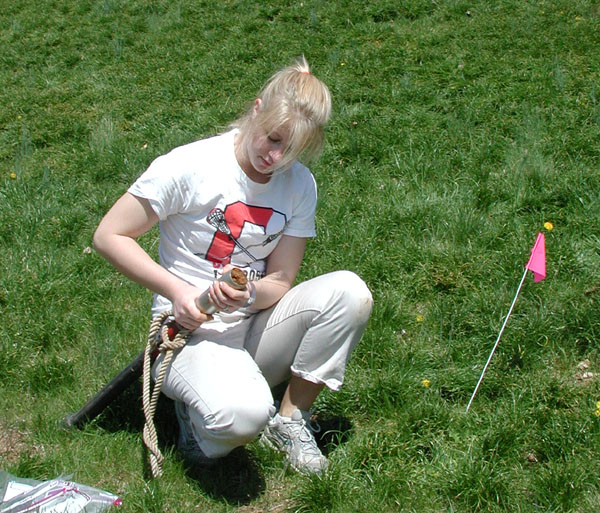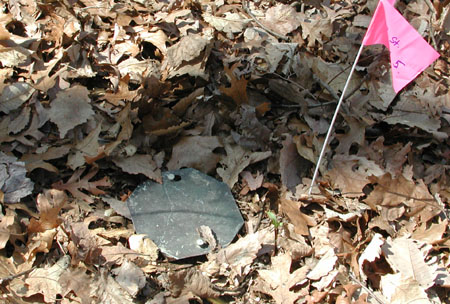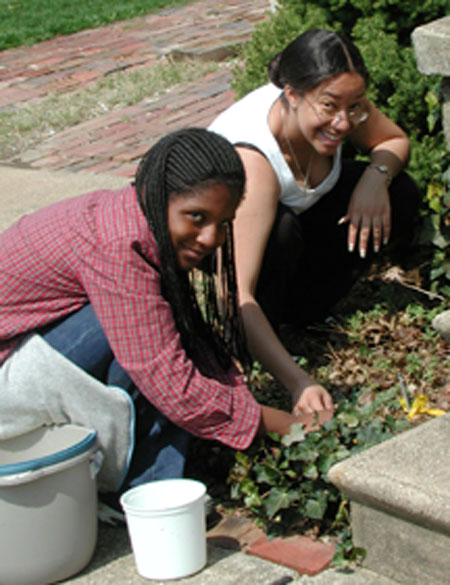SUMMER
of 2002
Urban areas
provide habitats for a variety of species. Some of these species are pests
while others play important roles in the ecosystems, being natural predators
of these pests, or facilitating decomposition and soil development. The objective
of the study is to see how management practices affect biodiversity in the
soil. The study focuses on two groups of invertebrates: arthropods (insects,
centipedes, spiders, pill bugs) and earthworms.
Sampling
in forest and residential lawns for arthropods and earthworms began in the summer
of 2002 in a 150 meter radius around the Cub Hill tower, and will continue until
the end of the summer of 2003. In the summer of 2002 worm sampling was conducted.
The results from this sampling were not very successful, due to the extreme
drought; only five species of worms were found. Most worms were of an exotic
species, however a very rare native species, Diplocardia texensis, was found
in the forest. Seasons affect the number and type of earthworms and arthropods
found, so more sampling is scheduled for 2003. By sampling at different times
of the year a better picture about the distribution and density of the different
earthworm species will be available.
The
spring 2003 sampling has already been completed and the summer 2003 sampling
is approaching fast. The samplings that have been conducted consist of arthropod
and earthworm sampling. Small arthropod samples were taken using a soil corer,
2 inch by 2 inch, which removed the soil from the ground. In the laboratory
the soil samples were extracted from the corer in order to look for any arthropods
in the soil core. In place of the soil cores a small solo cup was placed which
was filled halfway with water. This cup, called a bug-cup, caught insects that
crawled on the surface of the lawn. A small cover was placed on the cup about
an inch above its rim, to prevent rain and leaves from falling into the cup.
The bug-traps were checked and emptied daily, and water was replaced. After
five days the cups were picked up, and the hole was filled with soil and the
surface replaced with sod. There were three cores and three pitfall traps per
lawn.
Jenny
taking a soil core.
A
Pitfall trap installed in the forest.
Sampling
for worms
Earthworm
sampling was also conducted and it seems to have been very successful. Earthworm
sampling is conducted on lawns and in flower beds. To sample for earthworms
a mixture of mustard seed powder and water is poured in a1 foot by 1 foot grid,
which causes the earthworms to come to the surface. The worms are then picked
up so they can be weighed and identified.
In
the study it is expected that different species of arthropods will become dominant
in different seasons, which is why sampling was done in the summer of 2002,
spring of 2003, and is scheduled for the summer of 2003. This research provides
an opportunity for student involvement. Currently two biology majors from Taws
University, Janelle Harris and Jennifer Stiltz, are involved with this project.
During spring and summer they will devote most of their time to sampling, species
identification, and data analysis. In the fall of 2003 the students will present
their results at the 6th Annual Meeting of the Baltimore Ecosystem Study.



